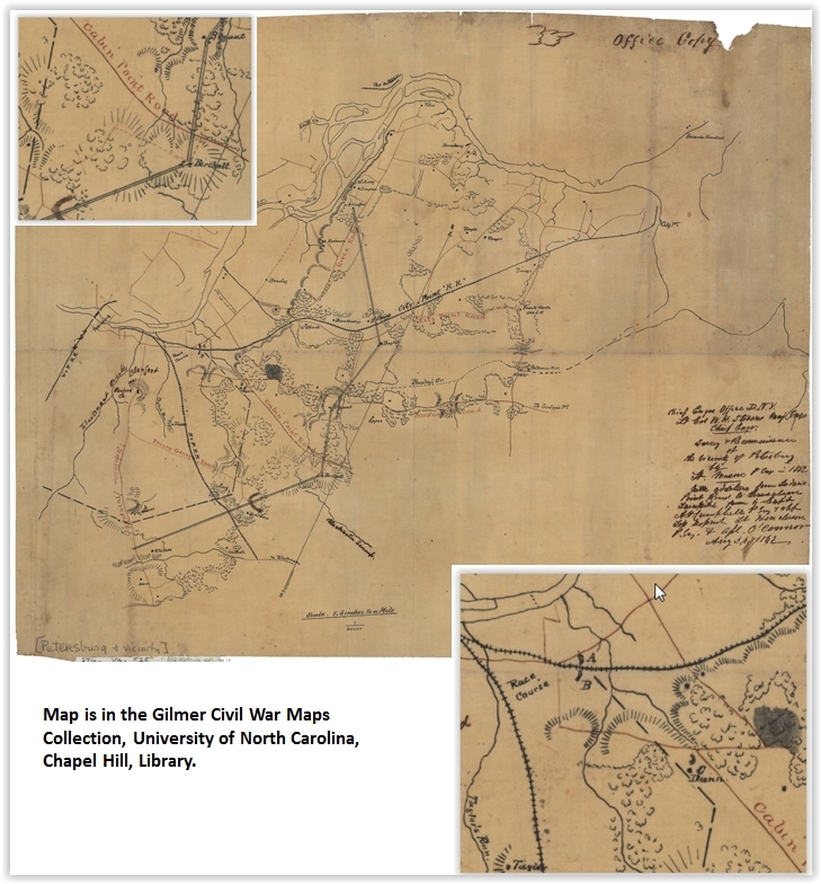August 1862 Map of Confederate Defenses of Petersburg
This map, prepared for the Chief Engineers Office, Department of Northern Virginia, is the earliest map we know of depicting the schematic layout of the Confederate defenses, eventually called the "Dimmock Line", east of the city of Petersburg. In the summer of 1862, there may have been three batteries already constructed- two labeled "A" and "B" guarding the road and railroad approaches from City Point, and another labeled "C", on high ground just north of the Dunn house. We don't know what is represented by the double lined feature that runs from the Arlington house on the bluff overlooking the Appomattox River, south to the Baylor house, then to the Bryant house and the Birchett house before taking a swing southwest toward the Jerusalem Plank Road. Could this be a plan for an outer line of defensive works that was never constructed? On June 15, 1864, Federal troops faced a line of hastily constructed rifle pits thrown up across the City Point Road near Baylor's farm. The rifle pits were fronted by a line of abattis and backed by Edward Graham's four gun Petersburg Battery (Howe 1988:22), all of which presented a serious obstacle to the U. S. advance.


